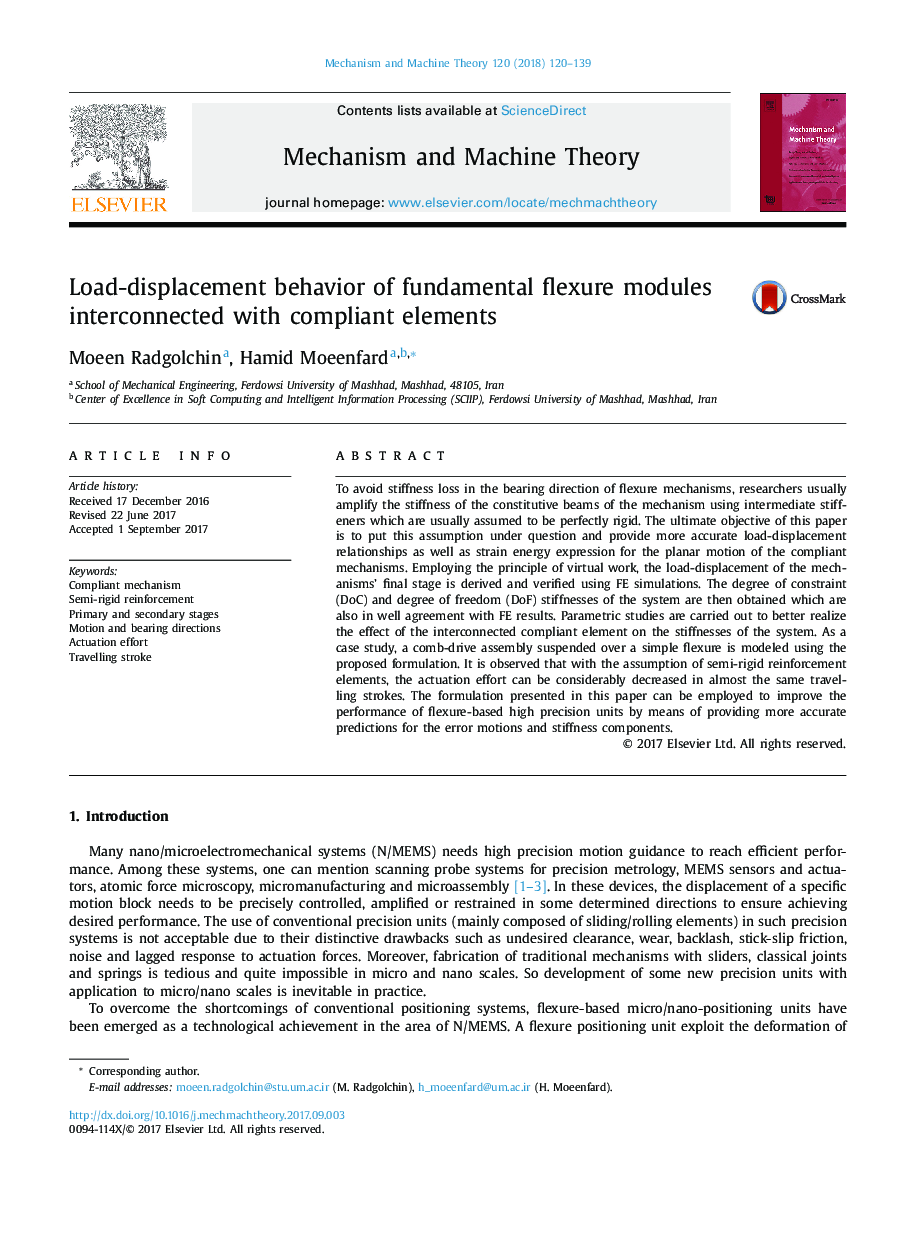| Article ID | Journal | Published Year | Pages | File Type |
|---|---|---|---|---|
| 5018721 | Mechanism and Machine Theory | 2018 | 20 Pages |
Abstract
To avoid stiffness loss in the bearing direction of flexure mechanisms, researchers usually amplify the stiffness of the constitutive beams of the mechanism using intermediate stiffeners which are usually assumed to be perfectly rigid. The ultimate objective of this paper is to put this assumption under question and provide more accurate load-displacement relationships as well as strain energy expression for the planar motion of the compliant mechanisms. Employing the principle of virtual work, the load-displacement of the mechanisms' final stage is derived and verified using FE simulations. The degree of constraint (DoC) and degree of freedom (DoF) stiffnesses of the system are then obtained which are also in well agreement with FE results. Parametric studies are carried out to better realize the effect of the interconnected compliant element on the stiffnesses of the system. As a case study, a comb-drive assembly suspended over a simple flexure is modeled using the proposed formulation. It is observed that with the assumption of semi-rigid reinforcement elements, the actuation effort can be considerably decreased in almost the same travelling strokes. The formulation presented in this paper can be employed to improve the performance of flexure-based high precision units by means of providing more accurate predictions for the error motions and stiffness components.
Keywords
Related Topics
Physical Sciences and Engineering
Engineering
Industrial and Manufacturing Engineering
Authors
Moeen Radgolchin, Hamid Moeenfard,
